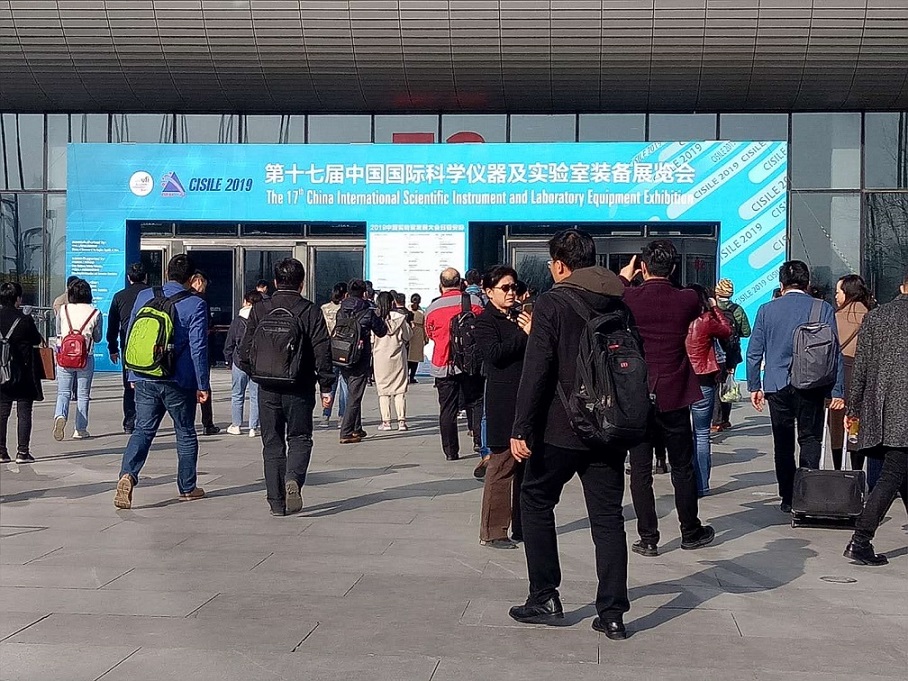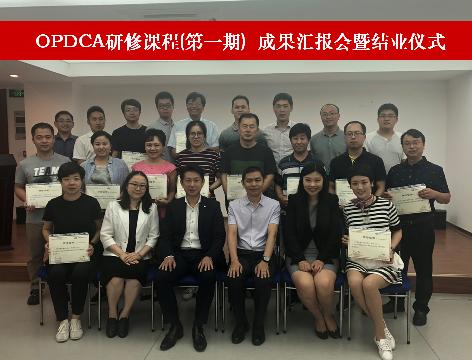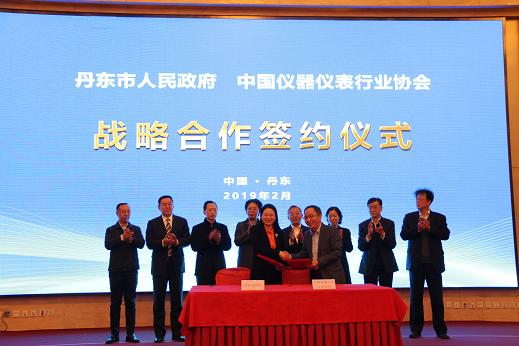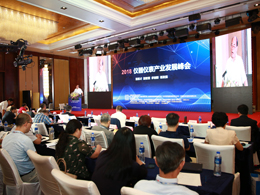政策信息
- 工信部:推进实施《中国制造2025》情况(中英文版)
信息来源:工信部规划司 上传日期:2017-03-13 点击率:3216次 -
推进实施《中国制造2025》情况
工业和信息化部
(2017年3月11日)
实施《中国制造2025》,是党中央、国务院立足我国制造业未来发展而做出的一项重大战略部署,是我国实施制造强国战略的第一个十年行动纲领。《中国制造2025》发布实施以来,在国家制造强国建设领导小组协调推动下,有关方面着力完善顶层设计和工作机制,强化部门协同和上下联动,发挥企业主体作用和重大工程带动作用,各项工作取得了阶段性进展,为稳定工业增长、加快制造业转型升级发挥了重要作用。
一、主要工作情况
(一)狠抓规划落实,“五大工程”实施效果初显。我部会同发展改革委、科技部、教育部等有关部门发布实施11个配套规划,出台了一批支持政策措施,组织实施了国家制造业创新中心建设、智能制造、工业强基、绿色制造、高端装备创新等五项重大工程。目前,首家创新中心——国家动力电池创新中心已挂牌成立,国家增材制造创新中心开始筹建,培育建设19家省级制造业创新中心。开展了226个智能制造综合标准化试验验证和新模式应用项目,遴选了109个智能制造试点示范项目,建设了首批19家产业技术基础公共服务平台,推进“一揽子”重点突破行动和“一条龙”应用计划,一批核心基础零部件、关键基础材料和先进基础工艺取得突破。启动绿色制造体系建设,组织99家企业开展绿色设计试点示范,创建51家国家低碳工业园区,实施57项高风险污染物削减项目,规模以上企业单位工业增加值能耗下降约5%。高端装备创新成果不断涌现,高铁关键技术和配套技术、电动汽车硬壳电芯关键材料实现重要突破。
(二)聚焦重点目标,重大标志性项目取得阶段性成效。15个年度重大标志性项目中,7个完全落实,4个基本落实,其余正在推进。部分项目取得了突破性进展,如成功研发我国首款柔性复合工业机器人,并已形成小批量供货能力,实现了批量生产RV减速器并获得国外订货,实现了规模化生产谐波减速器。
(三)开展试点示范,落地生根效应凸显。积极推进《中国制造2025》试点示范城市(群)创建工作,已批复宁波、泉州、沈阳、长春、武汉、吴忠、青岛、成都等8个试点示范城市和江苏苏南五市、广东珠江西岸、湖南长株潭3个试点示范城市群。目前,各试点示范城市(群)按照实施方案的要求,围绕构建产业升级、科技创新、政策保障、人才培养等体系进行综合试点,积极探索新常态下制造业转型升级的新模式和新路径,力争尽快形成可复制、可推广的经验。
(四)制定分地区指南,各地差异化发展格局加快形成。按照“基于比较优势、促进错位发展、深化部省合作”原则,工业和信息化部与各地强化工作对接,制定了《中国制造2025分省市指南(2016年)》,引导解决长期以来存在的重复建设、同质竞争等问题。各地积极对接《中国制造2025》,根据自身资源优势、产业基础、区位条件和市场环境,选择发展重点和方向,制定相关政策措施,加快促进产业转型升级。截至2016年末,已有29个省(区、市)出台了实施方案或指导性文件,推动形成因地制宜、特色突出、区域联动、错位竞争的制造业发展新格局。
(五)强化政策引导,制造业与互联网融合效应明显。国务院印发了《关于积极推进“互联网+”指导意见》和《关于深化制造业与互联网融合发展的指导意见》,通过政策引导和各方努力,互联网已广泛融入研发设计各环节,关键产品和装备智能化步伐加快,2016年企业数字化研发工具普及率达到61.8%,关键工序数控化率达到33.3%。推动大企业“双创”平台发展取得良好成效,47%的大企业搭建并运营了协同创新平台,中央企业已建成各类互联网“双创”平台110个。两化融合管理体系贯标扎实推进,全国4000余家企业开展贯标、7.2万余家企业开展自评估自诊断和自对标,贯标企业运营成本平均下降8.8%、经营利润平均增加6.9%。积极推进工业互联网发展,部署以顶层架构和关键标准为重点前瞻性研究,加强产学研用协同,通过试点示范加快应用推广。
(六)实施专项行动,质量品牌建设取得初步成效。实施消费品工业增品种、提品质、创品牌“三品”专项行动以来,国务院办公厅发布了《开展消费品工业“三品”专项行动营造良好市场环境的若干意见》、《消费品标准和质量提升规划(2016—2020年)》,工业和信息化部、质检总局和国防科工局联合发布了《促进装备制造业质量品牌提升专项行动指南》、《装备制造业标准化和质量提升规划》。2016年,新核定23家工业产品质量控制和技术评价实验室,完成669项强制性标准和计划的整合精简工作,发布208项消费品行业标准,支持11项由我国提出提案的国际标准项目,为消费品“提品质”奠定重要基础。在全行业累计树立251家品牌培育示范企业,首批参与产业集群区域品牌建设试点的22家产业集群市场占有率平均提高2.3%,出口增速平均超过10%,新产品产值率从27%提高到34.1%。
二、面临的主要困难和问题
(一)国际环境复杂严峻。世界经济正处在动能转换的换档期,传统增长引擎对经济的拉动作用减弱,人工智能、3D打印等新技术虽然不断涌现,但新的经济增长点尚未形成,增长低迷态势仍在延续。“逆全球化”思潮和保护主义倾向抬头,不确定因素明显增加。
(二)创新发展路径有待探索。制造业转型升级、新旧动能接续转换没有现成经验可以照搬,需摆脱对传统发展模式的路径依赖。创新模式、理念和发展路径,统筹处理培育新产业和改造旧产业、稳增长和调结构、政府引导和市场作用关系等重大问题仍然任重道远。
(三)科学有效发挥市场作用有待加强。面对经济下行压力较大形势,部分地区、部分行业为促投资、稳增长,还有“一哄而上”的冲动。同时,制造业投资尤其是民间投资下滑趋势、部分制造企业生产经营压力过大等问题应引起足够重视,必须及时出台政策措施加以引导。
三、下一步工作打算
(一)加大“五大工程”等实施力度。制订发布制造业企业“双创”平台培育计划,以提升工业云、工业大数据、工业互联网等创业创新技术支撑能力为重点,开展制造业企业“双创”专项行动。加快推进机器人、电子信息、新材料等领域创新中心建设,指导和推动省级创新中心建设。加快培育离散型智能制造、流程型智能制造、网络协同制造、大规模个性化定制和远程运维服务等新模式,突破增材制造、智能传感与控制等关键技术装备。继续组织实施“一揽子”重点突破行动和“一条龙”应用计划,完善产业技术基础体系,加强产业技术基础公共服务平台建设,促进整机(系统)和基础技术互动发展。推进绿色制造体系建设,继续组织开展绿色制造系统集成,加快推动传统制造业绿色化改造示范,实施生产过程清洁化、水资源利用高效化和基础制造工艺绿色化改造。围绕重点领域研发一批关键系统和核心部件,推动一批国外对我限制出口、国内亟需的关键装备取得突破,如航空发动机及燃气轮机、高档数控机床。
(二)扩大试点示范城市(群)覆盖面。选择20—30个基础条件好、示范带动作用强的城市(群),继续开展“中国制造2025”试点示范创建工作。指导试点示范城市(群)在落实五大新发展理念、任务实施路径和配套政策举措方面先行先试。一方面加大工作协调和督促力度,建立考核评估体系,形成中央、省、试点市聚焦重点领域,协同支持的发展格局;另一方面发挥上下联动机制作用,加强引导和规范,实现各地制造业差异化发展。
(三)加快重大标志性项目建设。继续加大统筹协调力度,对于尚在实施过程中的2016年度重大标志性项目,要进一步明确分工和进度要求,确保项目实施工作落到实处。同时,围绕《中国制造2025》重点领域的短板和瓶颈,继续遴选一批基础条件好、关联程度大、长期制约产业发展、未来2—3年内有望取得突破的项目,作为2017年度重大标志性项目,集中力量重点攻关。
(四)实施新一轮重大技术改造升级工程。深入实施制造业升级改造重大工程包,重点支持企业智能化改造、基础能力提升、绿色制造推广、高端装备发展等重大工程。继续做好《工业企业技术改造升级投资指南》宣传推广工作,加强对企业、地方和金融机构的引导。完善企业技术改造重大项目库,编制年度导向计划,加强信息共享与产融对接,发展符合技术改造特点的金融产品和服务。
(五)优化制造业发展环境。深化简政放权、放管结合、优化服务改革,加快政府职能转变,强化行业准入规范管理,构建权责明确、透明高效的事中事后监管体系。实施更加精准的产业政策,推动产业政策向普惠性、功能性转变,加强产业政策与财税、金融、贸易等政策的联动配合。加大中小企业支持力度,推动落实已出台的税收优惠等政策措施,支持小微企业融资模式创新,有效降低企业成本。
(六)务实推进国际交流合作。践行开放发展理念,利用双边及多边合作机制,加强“中国制造2025”与相关国家工业发展战略对接,共同应对新一轮科技革命和产业变革带来的挑战,扩大国际智能制造合作,深化与“一带一路”沿线国家产业投资合作,推动落实国际产能合作重大项目,实现合作共赢。
英文版
The Implementation of “China Manufacturing2025”
Ministry of Industry and Information Technology
(March 11, 2017)
To implement“China Manufacturing 2025”, the first ten-year action guideline for building China into a strong manufacturing nation, is an important strategic move madeby the CPC Central Committee and the State Council for the future developmentof our manufacturing sector Since its promulgation, under the coordination ofthe State Leading Group for Building China into a Strong Manufacturing Nation,relevant agencies have improved top-level designing and working mechanisms,strengthened synergy coordination and interaction among different bodies and atdifferent levels, and gave play to the role of enterprises as principal partand the role of key projects as enabler. Progress was made in various aspectsof our work which played an important role in stabilizing industrial growth andspeeding up manufacturing transformation and upgrading.
I. Progress of Main Activities
1. Plans were vigorously implemented and “Five Major Programs” yielded initial results.The Ministry of Industry and Information Technology (MIIT), in collaborationwith relevant agencies including National Development and Reform Commission,Ministry of Science and Technology and Ministry of Education, published andimplemented eleven supporting plans and a full range of supporting policies andmeasures . Five major programs were carried out, including the construction ofnational manufacturing innovation centers, smart manufacturing, consolidationof industrial foundation, green manufacturing, and high-end equipmentinnovation. As of now, the first innovation center -- National Power BatteryInnovation Center, was established, whereas preparation for establishing theNational Additive Manufacturing Innovation Center was underway, and 19provincial manufacturing innovation centers were built. 226 projects forcomprehensive and standardized trial as well as new model application of smartmanufacturing were implemented, 109 smart manufacturing pilot programs wereselected and the first batch of 19 public service platforms for industrialtechnologies was established. Breakthroughs were achieved for a full range ofcore spare parts, key basic materials and advanced basic technique, as a resultof the implementation of a series of major breakthrough actions and one packageapplication plan. The building of a green manufacturing system was initiated.99 enterprises were organized to conduct pilot work on green design. 51national low-carbon industrial parks were built. 57 high-risk pollutantreduction programs were undertaken. The energy consumption per unit of theadded value for industrial enterprises above the state designated scaledecreased by about 5%. High-end equipment innovations began to bear fruits,with significant breakthroughs made in areas such as key and auxiliarytechnologies of high-speed railway, and key materials for hard-shell cell ofelectric vehicle.
2. Initial progress was made in key milestone projects focusing onmajor objectives.Among the 15 key milestone projects of the year, 7 were fullyimplemented, 4 were basically implemented, and others were in progress. Someprojects achieved breakthroughs. For example, the first flexible hybridindustrial robot was successfully developed, and the capability for itssmall-volume production achieved. RV reducers has the capability for volumeproduction with overseas orders and harmonic wave decelerator is capable oflarge scale production.
3.Implementation ofpilot projects has taken root. Thework of setting up pilot cities / city clusters for “China Manufacturing 2025”was actively promoted, with 8 cities (Ningbo, Quanzhou, Shenyang, Changchun,Wuhan, Wuzhong, Qingdao and Chengdu) approved as pilot cities, and five citiesin south Jiangsu province, west bank of Pearl River in Guangdong Province andChangsha, Zhuzhou and Xiangtan of Hunan Province approved as pilot cityclusters. Currently, in line with the implementation plan, all pilot cities /city clusters started comprehensive pilot work on industrial upgrading,technological innovation, policy guarantee and talent training, and began toexplore new models and paths for manufacturing transformation and upgradingunder the new normal situation with a view to gain experiences that can bereplicated elsewhere and applied widely as early as possible.
4.Region-specific guidelines were introduced to facilitatedifferentiated development across regions. Following the principle of “promotingdifferentiated development and ministry-province cooperation based oncomparative advantages”, MIIT strengthened alignment with all localities andformulated “Province and MunicipalitySpecific Guidelines for China Manufacturing 2025 (2016)” to help solve suchlong-standing problems as redundant construction and homogeneous competition.In line with "China Manufacturing 2025", and taking into account oflocal resource advantages, industrial development status, geographicalconditions, and market environment, all localities identified development prioritiesand goals and developed related policies and measures to accelerate industrialtransformation and upgrading. By the end of 2016, 29 provinces, autonomousregions and municipalities have promulgated implementation plans or guidingdocuments designed to pursue a new environment for developing manufacturing,which suits local conditions, boasts distinctive local features, and ensures coordinationacross regions and differentiated competition.
5. The integration of manufacturing industry and Internet achievednoted results thanks to more effective policy guidance. Guided by policiessuch as Guidelines on Promoting Internet+and Guidelines on Deepening Integrationof Manufacturing Industry and Internet as issued by the State Council andas a result of efforts by all parties concerned, Internet was widely applied inthe R&D and designing process. The key products and equipment became moreintelligent. In 2016, the penetration rate of applying digital R&D toolsfor enterprises reached 61.8% and the digitalization of key processes reached33.3%. The development of “mass entrepreneurship and innovation” platforms forlarge enterprises yielded good results, in which, 47% established and operatedplatforms for collaborative innovation and the state-owned key enterprisesbuilt up 110 Internet-based platforms for "mass entrepreneurship andinnovation". Standard implementation of the administrative system for theintegration of manufacturing industry and internet proceeded smoothly involvingover 4,000 enterprises nationwide. More than 72,000 enterprises didself-assessment, self-diagnosis, and self-benchmarking, with 8.8% decrease ofoperating cost and a 6.9% increase of operating profit on average for theseenterprises. Industrial Internet was promoted and prospective studies focusingon top-level architecture and key standards as priorities were undertaken.Collaboration among enterprises, academia, research institutes was strengthenedand application was accelerated through pilot programs.
6. Initial results were achieved in qualityimprovement and branding. implementation of special action. Since the implementation of thespecial action on enhancing the variety, quality and branding for consumergoods industry, the General Office of the State Council issued Opinions on Special Actions of Enhancing theVariety, Quality and Brand for Consumer Goods Industry and Creating FavorableMarket Environment and Plan forImproving Standard and Quality of Consumer Goods (2016-2020), and MIIT, theGeneral Administration of Quality Supervision, Inspection and Quarantine, andthe State Administration of Science, Technology and Industry for NationalDefense jointly released jointly Guidelineson Special Actions of Enhancing Quality and Brand of Equipment ManufacturingIndustry and Plan for EnhancingStandardization and Quality Improvement of Equipment Manufacturing Industry.In 2016, 23 quality control and technical evaluation labs for industrialproducts were ratified, 669 compulsory standards and plans were merged andstreamlined, and 208 industrial standards for consumer goods were released. Wesupported 11 international standard drafts proposed by China, which laid asolid basis for improving the quality of consumer goods. 251 pilot enterprisesfor brand development were identified across the industry. The first batch of22 industrial clusters participating in the pilot projects for regional branddevelopment enjoyed on average 2.3% market increase, with over 10% exportgrowth rate and the output value ratio of new products increased from 27% to34.1%.
II. MainDifficulties and Problems
1. International environment remainscomplicated and challenging. The global economy is now in a period of moving toward new growthdrivers, and the role of traditional engines to drive growth has weakened.Despite the emergence of new technologies such as artificial intelligence and3D printing, new sources of growth are yet to emerge, and the global economyhas remained sluggish. Anti-globalization sentiment and protectionism are onthe rise, bringing more uncertainties.
2. Innovative development path remains to beexplored. Asthere is nooff-the-shelf experience to draw from in terms of transforming and upgradingthe manufacturing sector and achieving the shift between new and old drivingforces, we have to rid ourselves of dependence on traditional ways ofdevelopment. There is still a long way to go when dealing with issues such ashow to cultivate new industry and transform the old one, stabilize growth andadjust structure , and to address the balance of government guidance and marketrole.
3. Market forces need to be allowed to playa more effective role. Faced with pressure from economic downturns,some regions and sectors are in a rush to promote investment and stabilizegrowth. Meanwhile, we need to be fully aware of issues like the decrease ofinvestment, particularly private investment in the manufacturing sector, andthe extreme pressure that some manufacturing companies face in production andoperation. Necessary policies and measures must be developed promptly toprovide effective guidance.
III. Next Steps
1. To implement initiatives such as “Five Major Programs”. Develop and issuethecultivation plan of “mass entrepreneurship and innovation” platforms formanufacturing companies, and take special actions accordingly, focusing onimproving the supporting capability for innovative technologies such asindustrial cloud, industrial big data and industrial Internet. Promote thedevelopment of Innovation centers in the fields of robots, electronics &information and new materials, and guide and facilitate establishment ofprovincial innovation centers. Develop new models for discrete smartmanufacturing,process smart manufacturing, network coordinated manufacturing, large-scalepersonal and customized service, as well as remote operation and maintenance.Make breakthroughs in key technologies and equipment, such as additivemanufacturing, smart sensing and control. Continue to implement a series of major breakthrough actions and one package applicationplan., improve the basic system for industrial technologies, enhancebasic public service platforms for industrial technologies, and promoteinteractive development between the whole set / system and basic technologies.Facilitate development and integration of greenmanufacturing system, as well as pilot program for transforming the greendevelopment of traditional manufacturing sector, adopt clean productionprocess, improve efficiency of water resource utilization and transform basicmanufacturing technique in an environment-friendly way. Focusing on thedevelopment of key systems and core parts, facilitate breakthroughs in a rangeof key equipment which are subject to export restrictions abroad and urgentlyneeded domestically, such as aero-engines, gas turbines and high-end CNC machine tools.
2. To extend coverage of pilot cities and city clusters. Select 20 to 30 cities / clusterswith good conditions and exemplary role, and continue to promote pilot programsof “China Manufacturing 2025”. Provide guidance to pilot cities /city clustersin initiating the work on implementing the five new development concepts, waysto achieve tasks and supporting policies and measures. On the one hand, enhancecoordination and supervision, establish evaluation system and create anenvironment where central government, provinces and pilot cities focus on keyareas, collaborate and support each other; on the other, by making use of the interactivemechanism at different levels, enhance guidance and regulation, and pursuedifferentiated development of the manufacturing sector across regions.
3. To accelerate theconstruction of key milestone projects. We will coordinate theimplementation of the key milestone projects for 2016 which are still inprogress, to specify the division of responsibilities and schedule, to ensuresound implementation of the projects. Furthermore, focusing on key areas andbottlenecks defined in “China Manufacturing 2025,” we will continue to select arange of projects which have a sound foundation and high relevance, and whichhave long been the bottleneck for the industry and are likely to achievebreakthrough in the next 2 or 3 years, as key milestone projects for 2017 toadvance with concentrated efforts.
4. To implement a new round of key programs on technologicaltransformation and upgrading. Implement the key project package for transformingand upgrading manufacturing sector, support major projects on transformation ofcorporate intelligence, upgrading of basic capabilities, promotion of greenmanufacturing, development of high-end equipment. Continue to publicize Investment Guidelines on TechnologicalTransformation and Upgrading of Industrial Enterprises, strengthen guidancefor enterprises, localities and financial institutions. Improve the database onkey corporate technological transformation projects and compile annual guidingplan, enhance information sharing and matchmaking between industry andfinancing, and develop financial products and services that match withtechnological transformation.
5. To optimizedevelopment environment for manufacturing sector. Streamline administration and delegate more powers, improveregulation and optimize services. Speed up the transformation of governmentfunctions, improve regulation on industrial access, and establish anoperational and post-operational regulatory system which is transparent andefficient with clear division of rights and responsibilities. Implementtargeted industrial policies and strive to make policies inclusive and functional.Improve synergy and coordination between industrial policies with those oftaxation, financing and trade. Support SMEs development, implement preferentialtaxation policies already in place, support innovative ways of financing formicro- enterprises and reduce effectively costs of enterprises.
6. To promoteinternational exchange and cooperation. Implementing thephilosophy of open development, we will promote alignment of “China Manufacturing 2025” with the industrial developmentstrategies of international partners through various bilateral or multilateralcooperation mechanisms, and enhance international cooperation in smartmanufacturing, expand cooperation in industrial investment with countries alongthe Belt and Road regions, implement key projects on international capacitycooperation, in order to achieve win-win cooperation.
京ICP备13023518号-1 京公网安备 110102003807
地址:北京市西城区百万庄大街16号1号楼6层 邮编:100037





